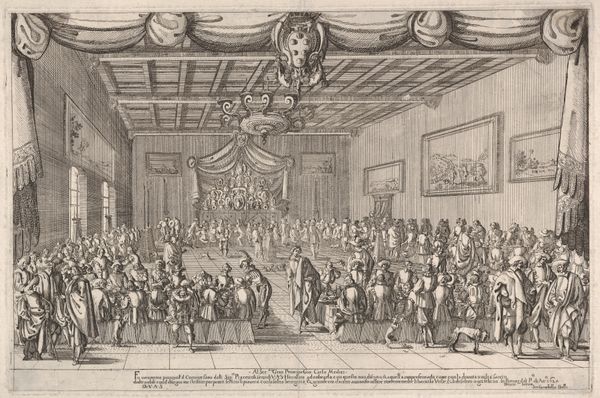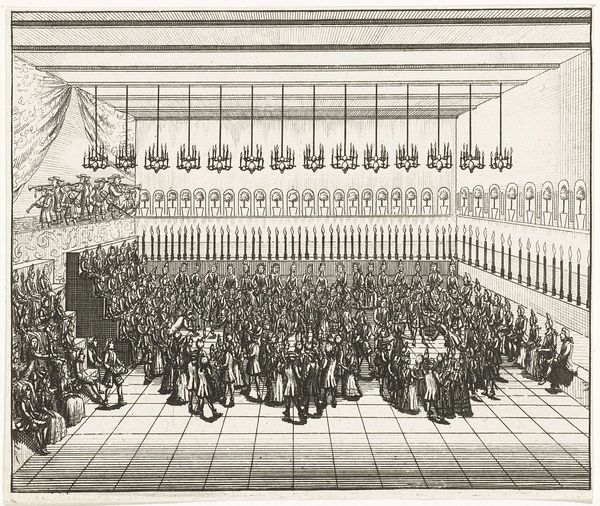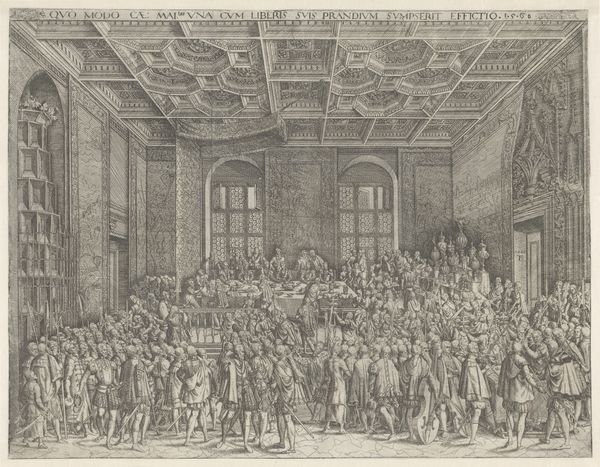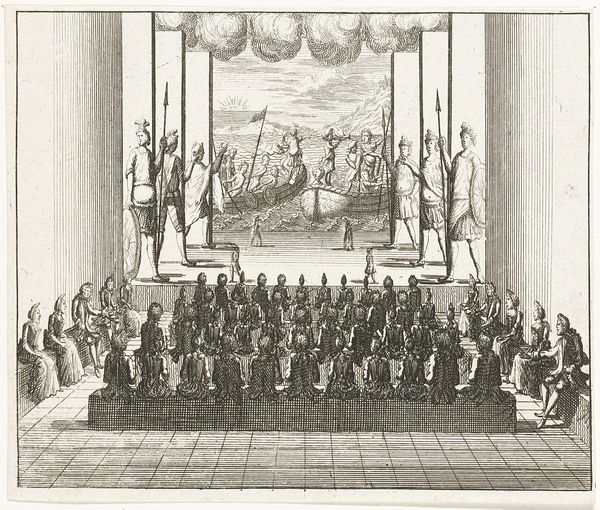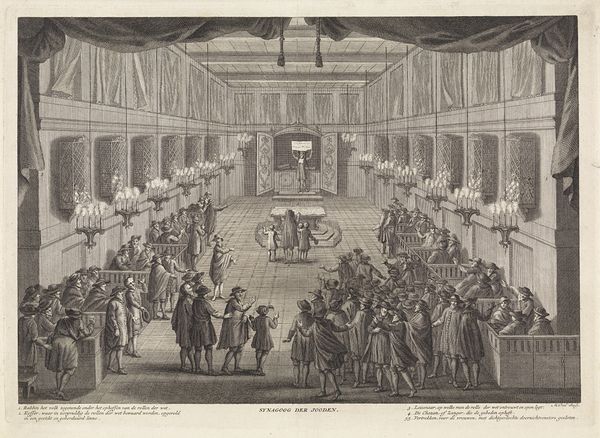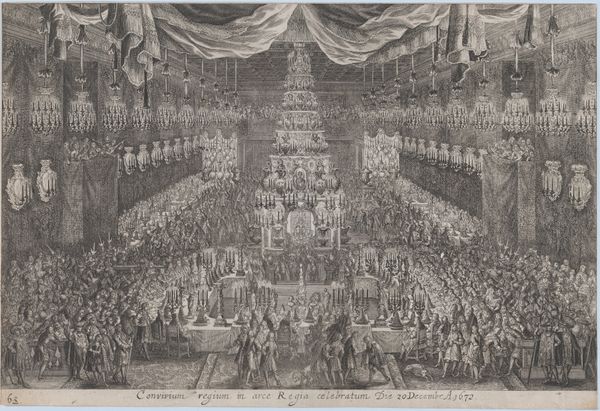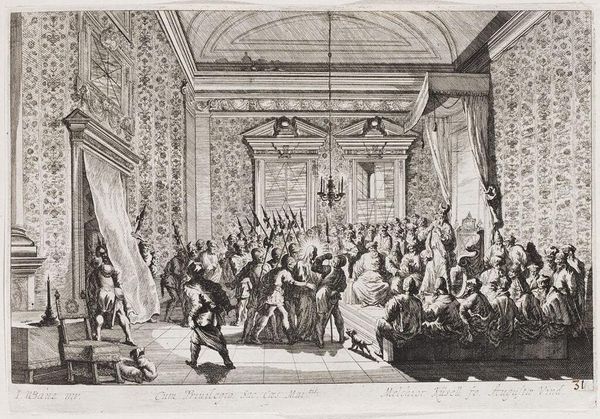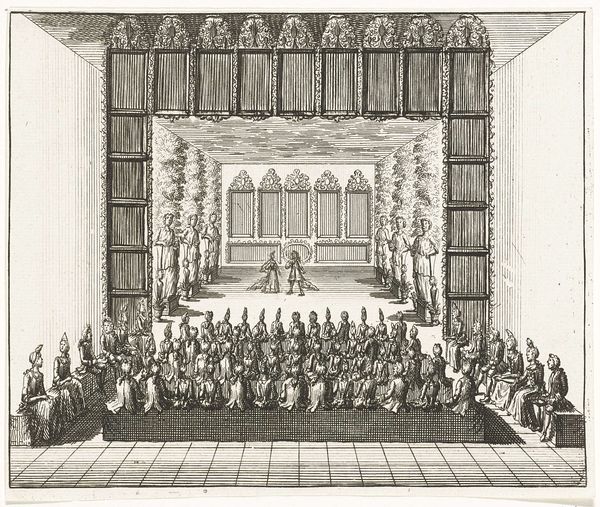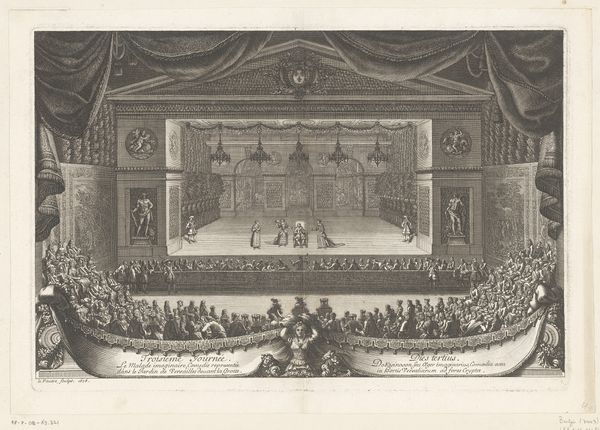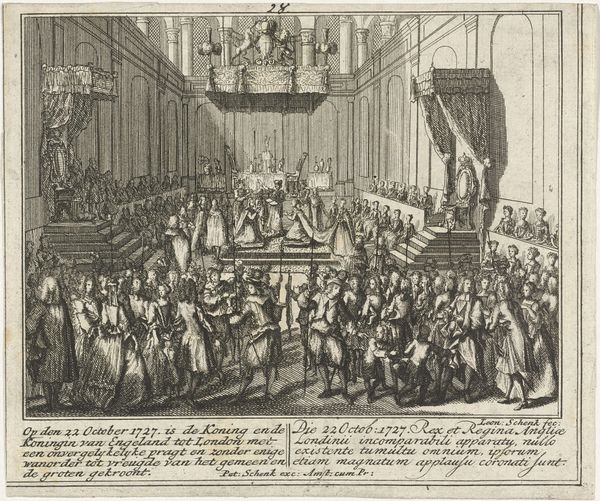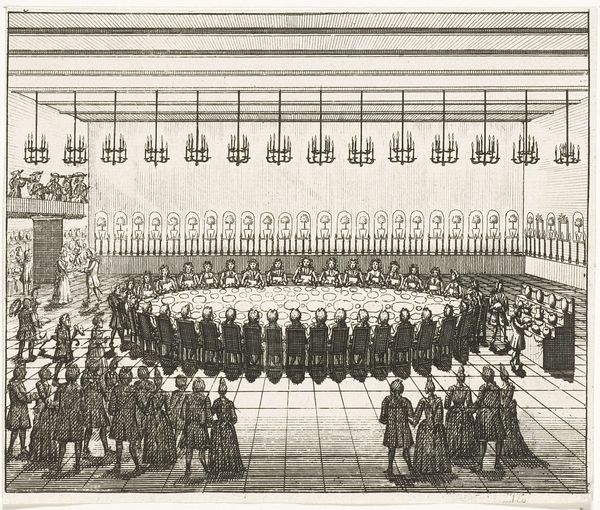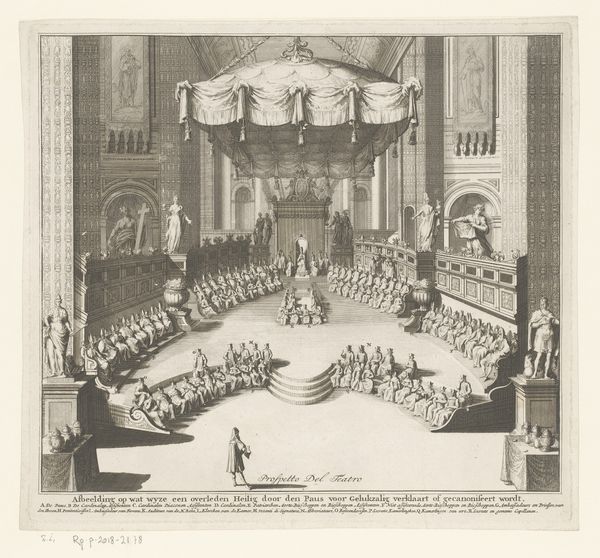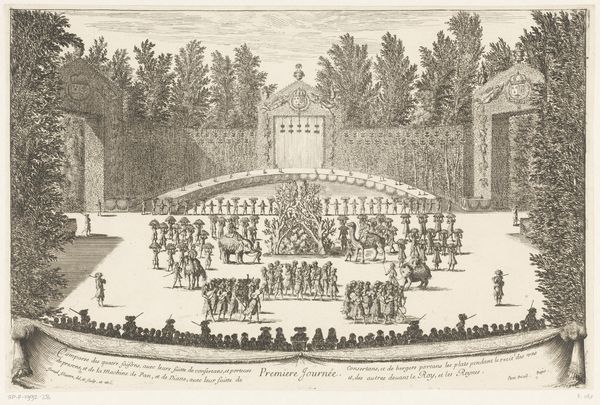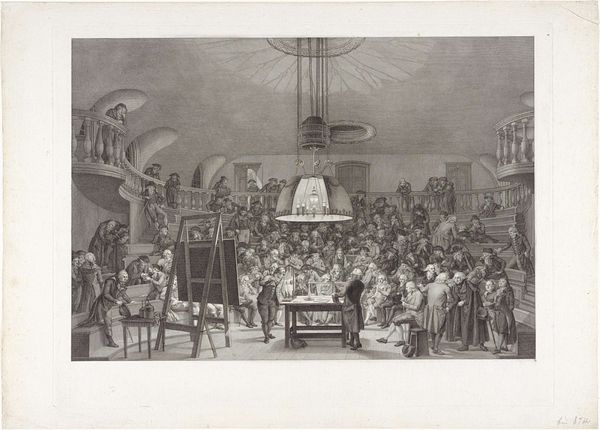
#
comic strip sketch
#
mechanical pen drawing
#
pen illustration
#
pencil sketch
#
old engraving style
#
linework heavy
#
sketchwork
#
pen-ink sketch
#
pen work
#
storyboard and sketchbook work
Dimensions: height 117 mm, width 142 mm
Copyright: Rijks Museum: Open Domain
Editor: Here we have “Bal, 1714,” a pen illustration from the early 18th century. The gathering feels very performative and staged, and there is an exaggerated attention to detail in the room's décor and clothing. How do you interpret this work in terms of its societal commentary? Curator: This piece immediately strikes me as a potent critique of power and performance within the context of 18th-century aristocratic culture. Consider the artist's meticulous depiction of the elite engaging in what is seemingly a formal dance, highlighting the constraints and expectations placed on individuals within this hierarchical society. How does the setting, particularly the architecture, influence your interpretation? Editor: Well, the strict lines and ornamentation seem to amplify that sense of rigid societal structures you mentioned. Almost like the walls are closing in, defining the space – and their roles within it. Curator: Precisely. Notice how the figures are arranged in relation to each other and the architecture. Does that reveal anything about their positions of power or social standing? Think about gender, class, and how these dynamics play out in a supposedly celebratory "bal." How do you think the artist views such a display? Editor: It almost feels satirical. The precision of the lines, bordering on obsessive, emphasizes the artificiality of it all. It’s like they are puppets moving through a prescribed ritual. Curator: I agree. This meticulous rendering allows the artist to unmask the underlying power structures. What do you make of the gaze? Whose perspective are we invited to adopt, and who is being observed? Ultimately, this "Bal" reflects the societal constraints of the era. Editor: Looking at it that way really changes how I see the work! The artist wasn’t just depicting a party, but providing a commentary on the performative nature of power itself. Curator: Exactly! Art enables a unique perspective that intersects and unravels themes across gender, race, identity, and political messages of the era.
Comments
No comments
Be the first to comment and join the conversation on the ultimate creative platform.
